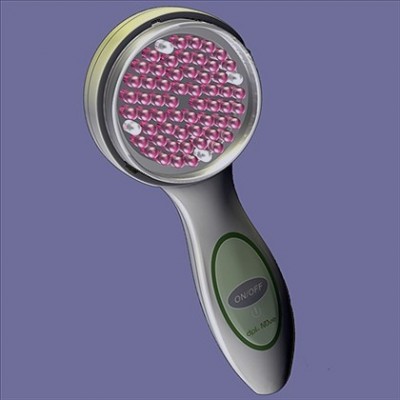Pain relief is a topic rarely discussed among cyclists. Perhaps it’s due to bravado. Or maybe it’s a question of embarrassment. Who knows?
Pain can come from an ill-fitting bike, poor posture, bad technique or injury. With respect to equipment, simple problems such as incorrect seat height can be addressed by the cyclist. For more serious fit problems, a professional bike fitting may be in order.
Both posture and technique can be improved by riding with more experienced cyclists who can provide a good example to follow and who can give advice. Equipment and technique adjustments can eliminate pain entirely.
However, when it comes to injuries, or other sources of chronic pain, remedies outside of fit and technique must be considered. Athletes use standard procedures for pain relief such as applying ice and taking over-the-counter pain medications (i.e. acetaminophen, ibuprofen, etc.)
When standard methods don’t work, or are inadequate, other options must be explored. Having played sports my entire life, and having sustained my fair share of injuries, I’ve tried a lot of things to combat pain, swelling and inflammation.
Recently, I decided to go the alternative medicine route for treating chronic pain. I investigated drug-free products marketed for pain relief. Some products were unconvincing since there was little evidence of their efficacy other than manufacturers’ claims and dubious testimonials.
As a skeptic, I was looking for a treatment with at least a modicum of scientific evidence to back up its claims. Somewhere in a chronic pain forum I stumbled upon a discussion about a type of product I’d heard of, but which I knew little about. It was an infrared light emitting device intended for pain relief therapy.
I thought about it in terms of credibility. My first observation was that this type of light produced heat, which is known to provide pain relief. My second observation was that LED lights had the potential to penetrate farther below the skin than topical applications. (I remembered reading about this some time ago.)
Before going any farther in this direction, I researched these lights to see what scientific studies had been done to test their usefulness. I came across a number of studies dating back to the 1980s. I also found an article which provided a good summary of the findings and a list of references from the scientific literature.
Essentially, LED light therapy works by emitting wavelengths that are able to pass through tissue to a depth of 1 inch. This is beneficial to cells because it causes them to create more ATP (the major source of energy for cellular reactions) and increases DNA and RNA activity.
Cycling injuries that could benefit from this type of therapy include osteoarthritis, joint injuries (e.g. knee or ankle pain), tendinitis (inflammation of a tendon) and pain from scrapes and cuts. These applications have been clinically proven and the FDA allows companies to advertise red and infrared lights as providing relief for minor pains and mild arthritis.
I have osteoarthritis in one of my knees from an old sports injury. This knee has deteriorated over time, but I don’t let it stop me from cycling. It does, however, require ongoing care if I want to stay in the saddle. Consequently, in addition to my daily icing routine – I apply ice upon waking and again after a ride – I decided to try an LED light for pain relief.
I chose the dpl® Nüve (deep penetrating light). Other major brands are probably just as good. I chose this brand because their products have gotten decent reviews, and they have a handheld model which is reasonably priced – as these things go ($160). This company also has a larger model (the DPL® Therapy System). It is one of the best light therapy products on the market, for those who are willing (and able ) to spend $350.
I bought mine from an online store with a 30-day money back guarantee, in case it didn’t work out.
I wasn’t sure what to expect when I turned the DPL on. But I was glad to have read the instructions because the handheld unit has a fan which can be quite startling when it kicks in.
When placed against the skin, the device gets pleasantly warm. The warmth is very soothing to my arthritic knee. After applying the light for the recommended 14 minutes, the pain and stiffness are noticeably reduced. While I don’t use it every day, I do apply it on days when my knee feels painful during a ride or when it aches after a ride.
In addition to osteoarthritis, I also had a problem with pain on the outside of my foot. The foot injury was not caused by cycling, but it made walking extremely painful. After applying the DPL light to the foot every day for a couple of weeks, the pain had lessened significantly. And even though I have no scientific evidence to back it up, I do believe that the light therapy helped to heal what had been a persistent problem with my foot.
As with everything, your mileage may vary. People have different tolerances for pain and they react differently to various treatments. Still, there’s nothing worse than having to take a prolonged break from riding due to a nagging injury. LED light therapy is an all-natural, drug-free remedy that a cyclist can use for treating chronic and acute injuries. If nothing else has worked, this type of treatment is certainly worth a try.




One Response to An Alternative Pain Relief Option for Cyclists